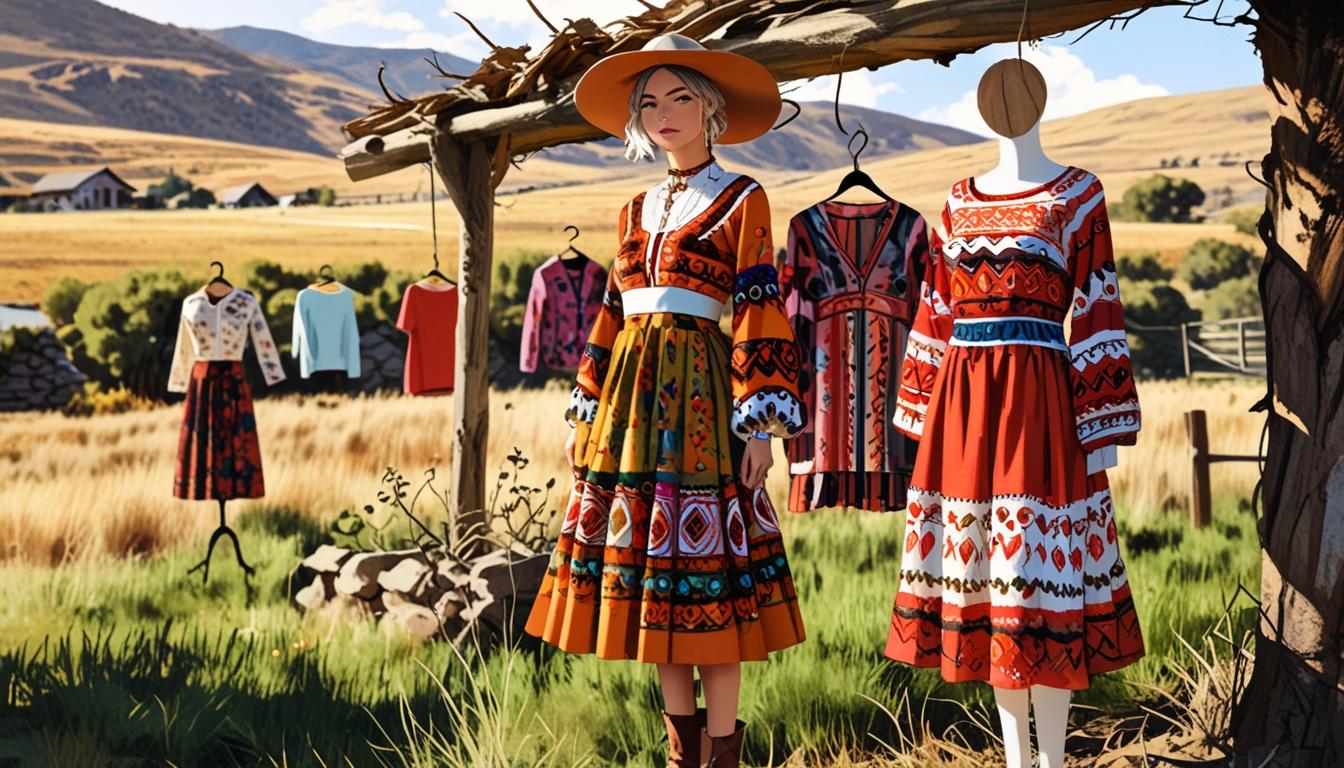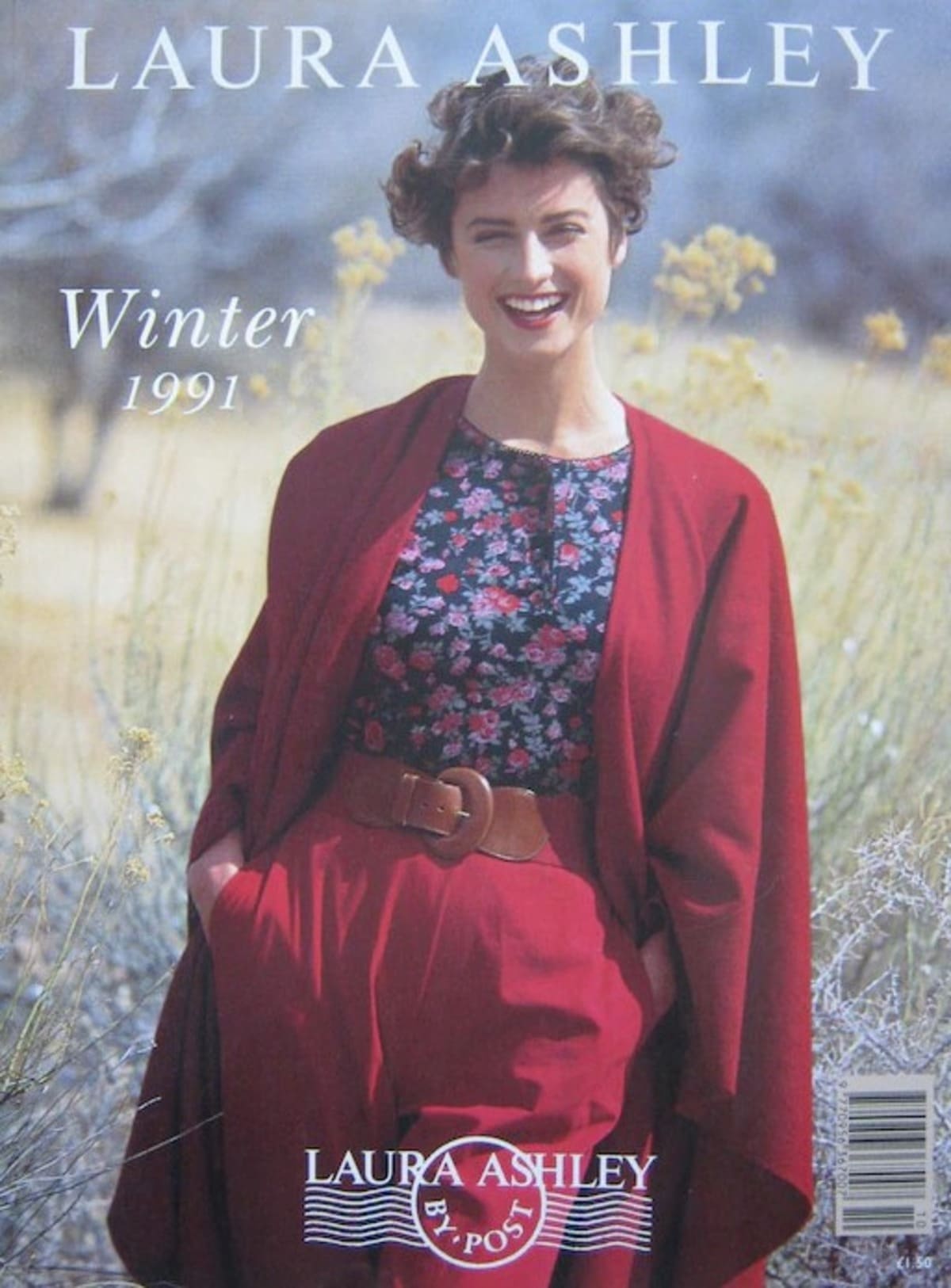The unique collection of garments curated by Eden Hore in Central Otago blends high fashion with rural life, showcasing individuality and a pioneering spirit.
Pauline Kingston’s handspun, hand-dyed, and hand-woven hostess outfit from the early 1970s is among the notable pieces showcased in “Central Otago Couture: The Eden Hore Collection,” which reflects a unique blend of fashion history and local culture. Eden Hore, a farmer and war veteran, carved out an unconventional legacy on his livestock farm in Central Otago, New Zealand. In a time when high fashion was rarely associated with rural life, Hore began curating an impressive collection of garments that would soon become recognized as one of the most significant fashion collections in Australasia.
Hore, who passed away in 1997, gained notoriety in the 1970s for his eclectic taste, acquiring gowns adorned with sequins and tulle, which clashed vividly with the agricultural landscapes typically associated with the region. “I’ve always been a bit different. A bachelor with all these dresses,” he once remarked, highlighting his individuality in a world where such interests were not commonplace for men.
In 1975, Hore transformed a tractor shed on his 8,100-hectare farm into a makeshift fashion museum, reflecting a pioneering spirit that extended beyond his fashion endeavors. His niece, Jo Dowling, noted that Hore was one of the first in his locality to adopt methods such as aerial top dressing on his farm, capturing wild deer for his livestock, and offering farm tours. Dowling emphasized his uniqueness, recounting how some family members were astonished by his collection of dresses, which diverged from traditional masculine activities.
The garments in Hore’s collection range from sheer fabrics to bold sequins, reflecting his appreciation for distinctive textiles. Dress historian Jane Malthus, who co-authored the book “Central Otago Couture,” described Hore as a man driven by his vision, regardless of public sentiment. “He didn’t care what other people thought of him. He was willing to stand out in the crowd,” she said. Claire Regnault, senior curator at the Museum of New Zealand Te Papa Tongarewa and co-author of the same book, noted Hore’s confidence to embrace individualism at a time when such expressions were rare.
Eden Hore was born in Naseby in Central Otago in 1919 and, after leaving school at 13, spent years in farming before serving in World War II. After the war, he purchased his farm, Glenshee, where he cultivated both sheep and cattle. Despite facing personal tragedies, including the death of his adopted daughter, Hore remained dedicated to his work—famously claiming to have once operated a tractor for an astounding 22 hours straight.
His couture collection grew out of a desire to explore what could be created from farm materials like wool and animal skins. A striking example includes a mid-1970s sheep leather pantsuit, embodying Honda’s innovative approach to integrating rustic fibers into high fashion.
Upon his death, Hore left his collection to his nephew, and in 2013, the Central Otago District Council acquired 226 garments and related accessories for $40,000, preserving Hore’s vision for posterity. Regnault remarked on the unifying theme of Hore’s collection, which showcases striking fabrics and bold colors, saying, “They’re very characterful clothes. As soon as you see them you can imagine a story, a fantasy around them.”
Hore also embraced rural tourism, hosting garden parties and fashion shows to support local charities. His efforts were a response to his community’s evolving landscape, especially after a railway bypass reduced local traffic. Beyond garments, he collected unique items, including taxidermied animals and ceramic decanters, fostering a sense of whimsy.
“Eden was trying to create something magical in this country at the bottom of the world,” Regnault concluded, encapsulating the essence of a man who sought to break boundaries while contributing positively to his community’s identity and cultural fabric.
Source: Noah Wire Services





Oh my goodness! Incredible article dude! Many thanks, However I am encountering troubles with your RSS.
I don’t know why I can’t join it. Is there anybody getting similar RSS issues?
Anybody who knows the answer will you kindly respond?
Thanx!!
webpage
I am regular reader, how are you everybody? This post posted at this website is really
fastidious.
casino en ligne
Very nice post. I just stumbled upon your blog and wanted to say
that I’ve truly enjoyed browsing your blog posts.
After all I’ll be subscribing to your feed and I hope you
write again very soon!
casino en ligne
Its like you read my mind! You seem to know so much about this, like you wrote the book in it or something.
I think that you can do with some pics to drive the message home a bit,
but instead of that, this is excellent blog. An excellent
read. I will certainly be back.
casino en ligne
Excellent goods from you, man. I have understand your stuff previous to and you
are just too excellent. I really like what you’ve
acquired here, really like what you are stating and the way in which you say it.
You make it entertaining and you still care for to keep
it smart. I can’t wait to read far more from
you. This is really a terrific site.
casino en ligne
Tremendous issues here. I’m very glad to see your article.
Thank you so much and I am having a look forward to contact you.
Will you please drop me a mail?
casino en ligne
Wonderful goods from you, man. I have understand your stuff previous to and
you are just too fantastic. I really like
what you have acquired here, certainly like what you’re
saying and the way in which you say it. You make it entertaining and you still care
for to keep it sensible. I can’t wait to read much more from you.
This is really a wonderful website.
casino en ligne
great points altogether, you simply won a emblem
new reader. What might you suggest about your post that you made a few days in the past?
Any sure?
casino en ligne
Amazing! Its genuinely awesome article, I have got much clear idea about from this paragraph.
casino en ligne
I am really glad to read this website posts which carries tons of
useful facts, thanks for providing these information.
casino en ligne